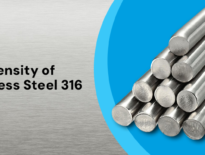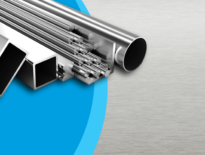SAE 1018 mild carbon steel is known for its excellent weldability and versatility in fabrication. It can be used to create parts with a uniform and hard surface due to its suitability for carburizing. With a good mix of toughness, strength, and ductility, AISI 1018 is a popular choice for many applications. In its hot-rolled state, it shows strong mechanical properties that make it suitable for various uses. It also has good machining characteristics, which is ideal for projects requiring precise work. Additionally, SAE 1018 has a high Brinell hardness, making it durable and effective for applications where hardness is important. Overall, AISI 1018 is a dependable mild carbon steel with a balanced set of properties for different industrial needs.
SAE 1018 Chemical Composition
| Chemical Composition | ||
| Carbon | C % | 0.150 0.200 |
| Manganese | Mn % | 0.600 0.900 |
| Phosphorus | P % | 0.030 max. |
| Sulphur | S % | 0.035 max. |
| Boron | B % | 0.0005 0.003 |
| Chromium | Cr % | 0.150 max. |
| Copper | Cu % | 0.200 max. |
| Molybdenum | Mo % | 0.060 max. |
| Nickel | Ni % | 0.200 max. |
| Lead | Pb % | 0.150 0.350 |
| Iron | Fe % | Balance |
SAE 1018 Chemical Properties
SAE 1018 is a low-carbon steel with around 0.6% to 0.9% manganese and small amounts of other elements. This composition makes it ideal for a variety of automotive and machinery uses. In its cold-drawn or polished form, AISI 1018 offers higher yield and tensile strength compared to hot-rolled or regular AISI 1010 steel. The steel’s chemical properties also give it excellent weldability, allowing for strong and reliable welds in different applications. Its versatility makes SAE 1018 suitable for many industrial uses, from construction machinery to small parts like screws and nuts. Overall, AISI 1018 is a dependable choice for creating tools and equipment due to its balanced and effective chemical composition.
Mechanical Properties of SAE/AISI 1018 Steel
SAE/AISI 1018 steel is known for its balanced mechanical properties. It has a tensile strength between 380 MPa and 540 MPa, and a yield strength ranging from 310 MPa to 420 MPa. The steel also features an elongation at break of about 21-23%, which indicates good ductility. The hardness of SAE/AISI 1018 can be adjusted through heat treatment processes, allowing customization for different applications. These properties make AISI 1018 a versatile steel choice for many industrial uses, where both strength and flexibility are required.
| Mechanical Properties | Metric | Imperial |
| Hardness, Brinell | 126 | 126 |
| Hardness, Knoop (Converted from Brinell hardness) | 145 | 145 |
| Hardness, Rockwell B (Converted from Brinell hardness) | 71 | 71 |
| Hardness, Vickers (Converted from Brinell hardness) | 131 | 131 |
| Tensile Strength, Ultimate | 440 MPa | 63800 psi |
| Tensile Strength, Yield | 370 MPa | 53700 psi |
| Elongation at Break (In 50 mm) | 15.0 % | 15.0 % |
| Reduction of Area | 40.0 % | 40.0 % |
| Modulus of Elasticity (Typical for steel) | 205 GPa | 29700 ksi |
| Bulk Modulus (Typical for steel) | 140 GPa | 20300 ksi |
| Poissons Ratio (Typical For Steel) | 0.290 | 0.290 |
| Machinability (Based on AISI 1212 steel. as 100% machinability) | 70 % | 70 % |
| Shear Modulus (Typical for steel) | 80.0 GPa | 11600 ksi |
Physical Properties of SAE/AISI 1018 Steel
SAE/AISI 1018 is a versatile low-carbon steel known for its excellent physical properties, making it a popular choice in many industries. Its machinability is top-notch, allowing for easy fabrication and shaping. The steel’s cold-forming ability offers flexibility in manufacturing processes. With a yield strength of 393 MPa, AISI 1018 provides reliable strength for structural applications. It also exhibits durability and weldability, which are crucial for a wide range of uses. The steel’s good ductility ensures it can handle deformation without breaking, while its wear resistance supports applications subject to abrasion. AISI 1018’s high thermal conductivity supports efficient heat treatment, and its low thermal expansion rate ensures stability across different temperatures. These physical properties make SAE/AISI 1018 a dependable choice for various engineering and manufacturing needs.
| Physical Properties | Metric | Imperial |
| Density | 7.87 g/cc | 0.284 lb/in3 |
SAE 1018 – Equivalent grades
| Standard | AISI / SAE 1018 |
|---|---|
| UNS | – |
| WERKSTOFF NR. | 25CrMo4, GS-25CrMo4 |
| BS 970 | 708A30, CDS110 |
| UNI | 25CrMo4 (KB), 30CrMo4 |
| JIS | SCM 420, SCM 430, SCCrM1 |
| EN name | – |
| EN # | 1.7218 |
SAE 1018 Steel Corrosion Resistance
SAE/AISI 1018 steel is a good choice for applications that require moderate corrosion resistance. As a low-carbon steel, it offers a balanced combination of strength and flexibility without the surface issues found in higher carbon steels. Its weldability further adds to its versatility, making it suitable for various manufacturing processes.
Compared to higher-strength alloys, SAE 1018 is also more cost-effective, which makes it an appealing option for projects with budget constraints. While it provides decent corrosion resistance, it is best used in environments where severe corrosion is not a major concern. Overall, the mix of corrosion resistance, weldability, and affordability makes SAE 1018 a practical choice for many engineering and manufacturing applications.
SAE 1018 -Grade Application:
- Oil and Gas Pipeline
- Chemical Industry
- Plumbing
- Heating
- Oil & Gas Industry
- Water Supply Systems
- Paper & Pulp Industry
- Power Plant
- Fabrication Industry
- General purpose applications
- Food Processing Industry
- Structural Pipe
- Heat Exchangers
Heat Treatment of SAE/AISI 1018 Steel
SAE/AISI 1018 steel undergoes a structured heat treatment process to achieve different material properties.
- Annealing involves heating the steel to 870–900°C and then slowly cooling it, which refines the grain structure for improved ductility and softness.
- Normalizing heats the steel to 860–890°C followed by air cooling, which adjusts the microstructure for better mechanical properties and uniformity.
- Stress Relieving heats the steel to 580–650°C to release internal stresses, which helps prevent future deformation.
- Hardening is done by quenching the steel in oil or water for increased hardness, followed by tempering at 170–230°C to balance hardness with toughness.
This heat treatment sequence enhances the steel’s mechanical properties, making it suitable for various industrial applications.
Machining SAE/AISI 1018 Steel
Machining SAE/AISI 1018 steel is relatively simple because of its low carbon content and favorable machining characteristics. This steel is composed mainly of iron with small additions of manganese, phosphorus, sulfur, and silicon, making it easy to work with for various machining tasks.
To achieve the best results, it is important to use high-speed cutting tools that are hard enough for the job, as this will improve tool longevity and efficiency. Common machining processes include turning, drilling, boring, milling, and tapping.
Since SAE/AISI 1018 does not have heat-treatable alloying elements, heat treatment is not recommended for this steel. Instead, focusing on proper tool selection and machining techniques is vital for producing high-quality parts. Following these practices will help ensure successful and efficient machining of SAE/AISI 1018 steel for diverse industrial needs.
Welding SAE/AISI 1018 Carbon Steel
Welding SAE/AISI 1018 carbon steel is a practical and budget-friendly choice for many applications. This low-carbon steel is known for its strength and durability, making it suitable for a wide range of welding jobs. It is especially effective for both large construction projects and smaller everyday tasks due to its cost-effectiveness and reliable performance.
SAE/AISI 1018’s low carbon content makes it easy to weld, providing good results in various applications. Its strong and tough properties make it a great option for industries like automotive and construction. Whether you’re working on a major project or just doing some routine welding, SAE/AISI 1018 offers the versatility and dependability you need.
Conclusion
SAE/AISI 1018 steel offers a range of benefits that make it a great material for many applications. Whether you’re working on automotive components, machinery, or everyday items, this steel’s strength and formability make it a top choice. Its ease of machining adds to its appeal, making it practical for a variety of projects.
This guide has covered the essential details about SAE/AISI 1018 steel, helping you understand why it’s a reliable and versatile option. With its broad uses and beneficial properties, SAE/AISI 1018 steel is a solid choice for your next industrial project.
FAQs
What is SAE 1018 steel?
SAE 1018 steel is a mild/low carbon steel known for its excellent weldability and ease of fabrication. It is often used for carburized parts due to its ability to produce a uniform, harder case.
What is equivalent 1018 steel?
1018 Steel is equivalent to A36 Steel in many applications. Both are used for high-performance tasks, though 1018 is typically cold-rolled and A36 is hot-rolled.
What is the composition of 1018 steel?
1018 steel contains 0.18% carbon, 0.04% manganese, and minimal amounts of other elements.


